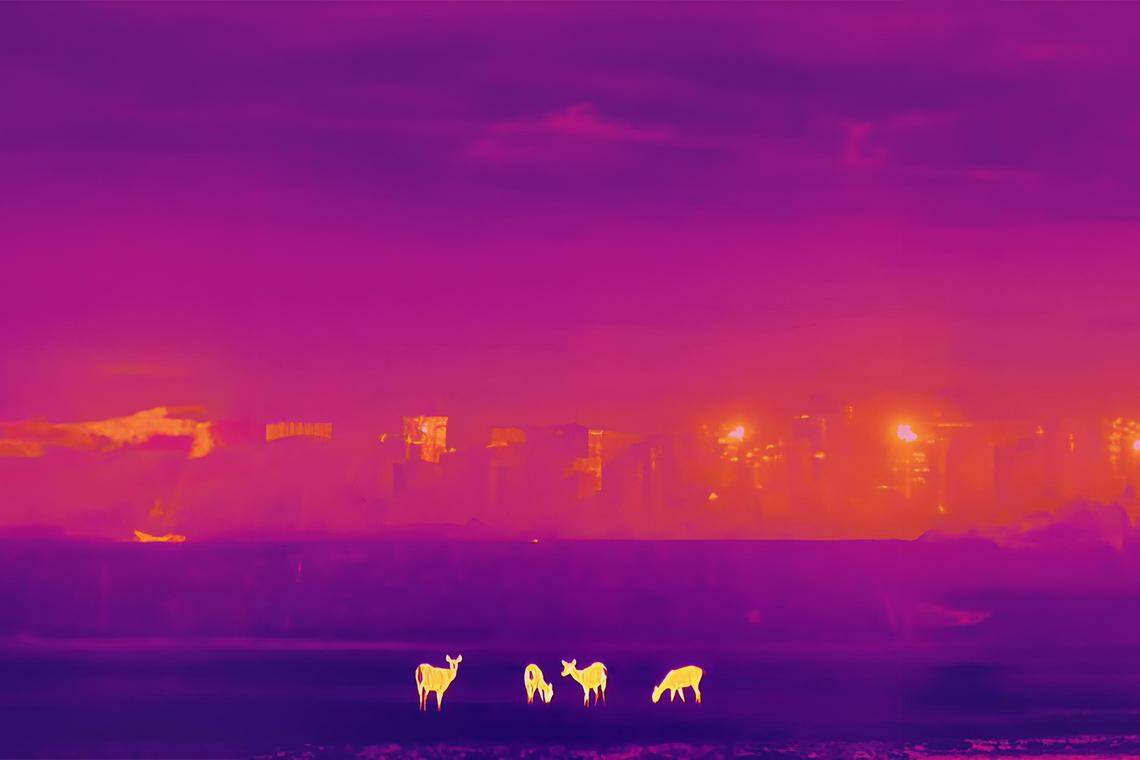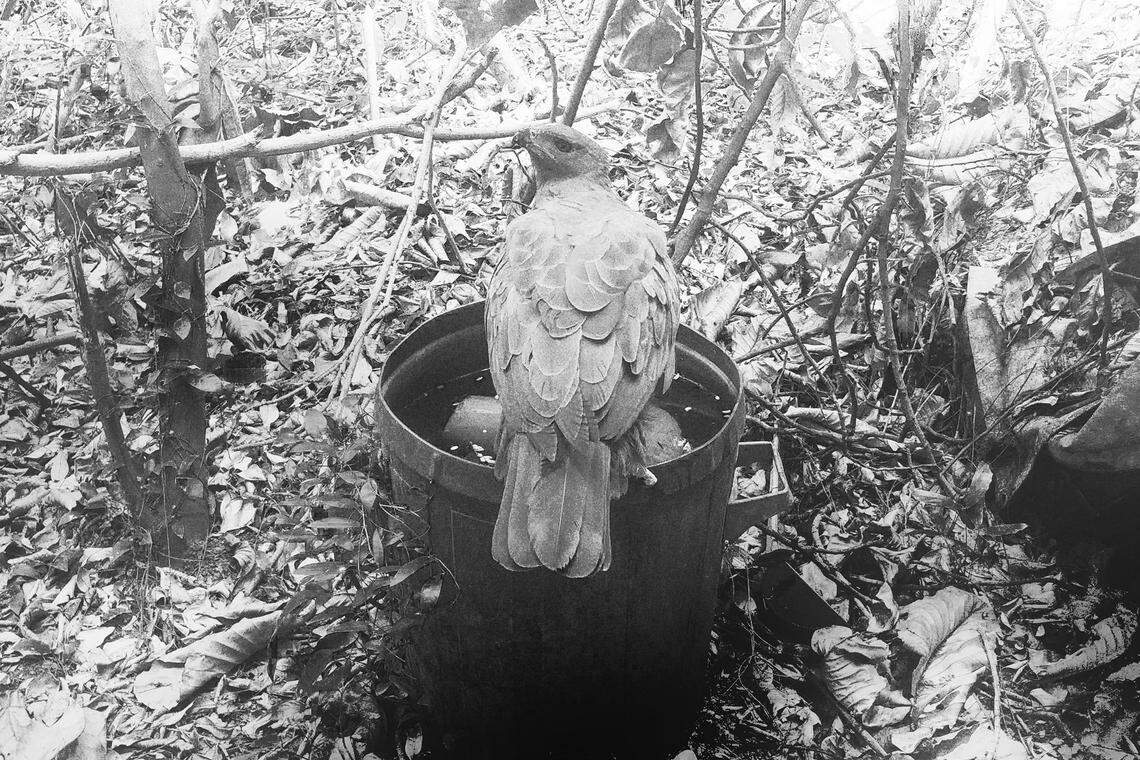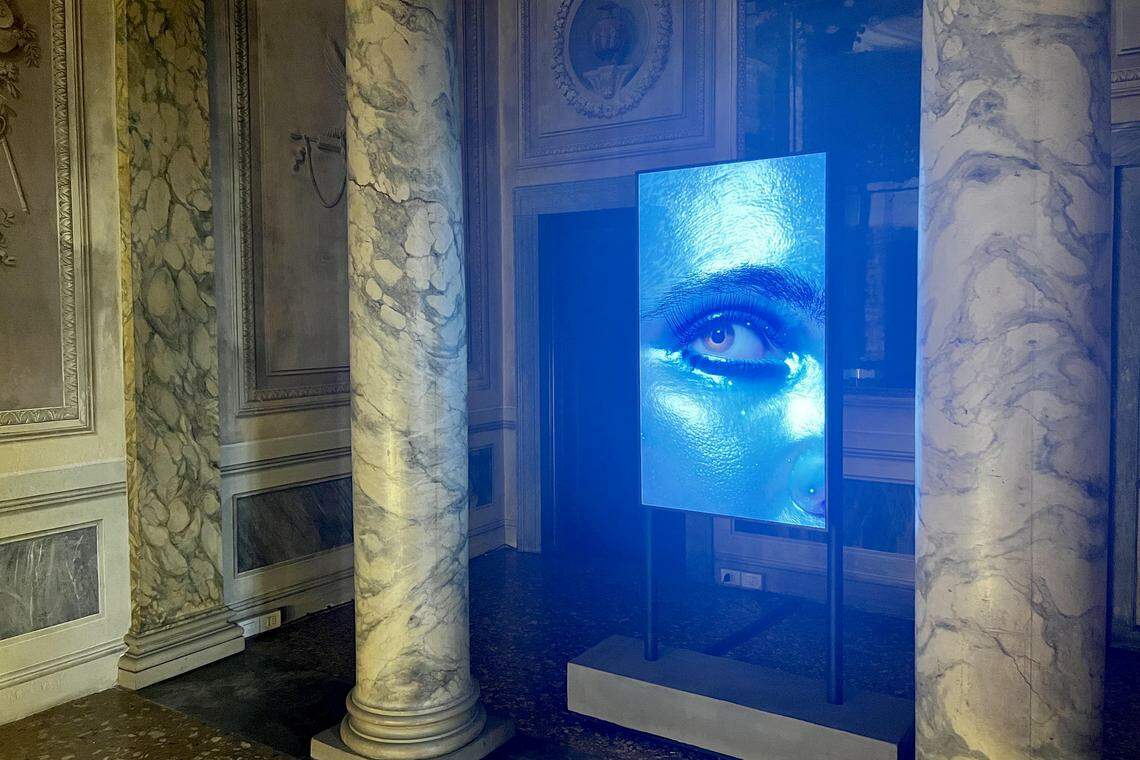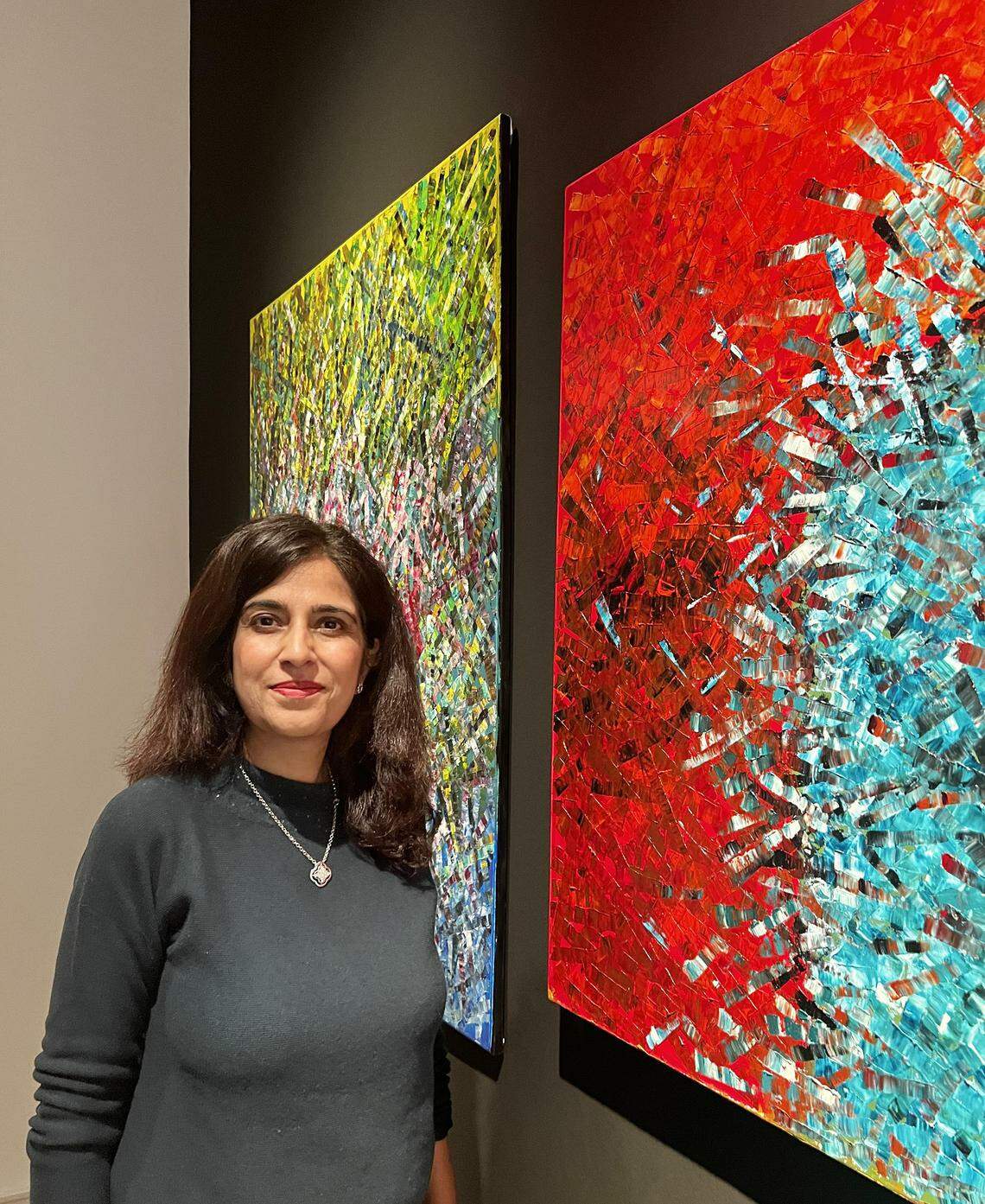At Venice Biennale, Singapore artists probe history & nature
The country sees record representation of its artists at the prestigious Venice Biennale 2024

(Venice)
THE Singapore Pavilion at the Venice Biennale 2024 feels like a mysterious space, hidden behind a large wall that lets no light through. When you find and enter it, you feel as if you’ve been spirited away to some secret sanctuary, insulated from the gaze of the outside world.
The animals in Robert Zhao Renhui’s films seem to have felt the same way. A herd of deer is shown peacefully grazing in a field near the Bukit Timah Expressway, seemingly oblivious to the noisy roads and looming Housing and Development Board (HDB) blocks nearby. A monitor lizard, an eagle and other animals luxuriate in rainwater-filled bins left behind by squatters in a forest near Gillman Barracks. A flock of parrots roosts regularly in the trees of Choa Chu Kang, unconcerned by the HDB dwellers nearby.
Zhao is a 41-year-old artist, long dedicated to exploring the relationship between humans and nature. For him, the forest has always been a place for discovery and reflection. Here, natural phenomena and human history are embedded in the soil and trees, waiting to be unearthed. When he wanders through the secondary forests of Singapore, he often finds fragments on the ground, such as broken plates, wine cups and medicine bottles from various eras, including the British colonial period and the Japanese occupation during World War II.

Some of these fragments have now made their way to Venice. Zhao has built a massive forest-like installation out of wood and peppered it with the fragments, as well as video screens capturing the animals that occupy or frequent the hidden spaces once occupied by humans but now abandoned and reclaimed by nature.
Zhao explains: “I wanted to create a structure that evokes the richness of the secondary forest, with all these material fragments carrying the traces of Singaporean history, as well as these videos showing the current life and rhythms of the forest. In the same way that some artists create cabinets of curiosities, I think of mine as a deconstructed natural history cabinet.”
A NEWSLETTER FOR YOU

Lifestyle
Our picks of the latest dining, travel and leisure options to treat yourself.
Facing the forest-like wooden structure are two large TV screens continuously showing 10 short films. They depict various animals, such as wild boars, deers and birds, that have come to inhabit the small pockets of nature that exist within the country’s concrete jungle.

“In Singapore, we often find tall HDB blocks standing next to a lonely little forest, where we find animals, big and small, living their own lives. At the outset, it appears like two extremes brushing up against each other, “ says Zhao. “Yet, the animals aren’t exactly in danger or suffering. They find ways to live and even grow in numbers despite human encroachment. They have a life force that sustains them and helps them to thrive. To me, these small successes of nature are worth documenting and celebrating.”
Commissioned by the National Arts Council and supported by Charles & Keith Group Foundation, Zhao worked with Singapore Art Museum senior curator Haeju Kim and the museum team over months to bring his ideas to fruition. The show, titled Seeing Forest, will continue to run in Venice for seven months until Nov 24, before it is taken back to Singapore for a second run.
INTERCONNECTED UNIVERSE
But Zhao is just one of several Singaporean artists captivating audiences at the 60th edition of the Venice Biennale, widely regarded as the most important art show on Earth. With some 87 countries competing for prestigious prizes, every country from Albania to Zimbabwe has brought their top contemporary artists to showcase their practices – and, indirectly, their countries’ cultural weight.

Besides these, there is also the main exhibition sprawled across two locations. This year, it is curated by the widely-respected Brazilian museum director Adriano Pedrosa and carries the title Foreigners Everywhere. It features an impressive slate of over 300 global artists, two of whom are Singaporeans chosen independently of the Singapore Pavilion.
One of them is Charmaine Poh, a 34-year-old artist who has been stopping visitor traffic with her heartfelt short films, Kin (2021) and What’s softest in the world rushes and runs over what’s hardest in the world (2024). The films document true stories of queer women struggling to find their place in Singapore, including the right to conceive and raise a child.
Many visitors pop into the screening room and find themselves staying for the entire length of the films. Unlike most films at the biennale, Poh’s films are straightforward and authentic, devoid of intricate narrative devices and flashy aesthetics adopted by the more experimental fare at the biennale.
“Considering how gargantuan the biennale is,” she says, “I’m just so thankful to the people who stopped and watched these films… They are not just about queer realities, but also a proposal for a more interconnected universe.”

Elsewhere, Sim Chiyin, former The Straits Times journalist-turned-artist, explores the present lives of former Malayan guerilla fighters who confronted the British in the anti-colonial, largely-undiscussed war that ran from 1948 to 1960. Now living in various parts of the world, these veterans try to recall and sing for the camera the socialist songs they once belted to rouse their spirits. One of these songs is Goodbye Malaya, a poignant ballad performed on the deck of the ship that deported them to China.
“Some of the men and women I interviewed are still alive; some may have passed,” says Sim. “The work (titled Requiem) is a tribute to them.”
YOUNG, OLD & LATE ARTISTS
Outside the main exhibition and country pavilions, two other Singaporeans are also flying the star-spangled red-and-white flag in concurrent events. One of them is Priyageetha Dia, a fast-rising 32-year-old artist best remembered by Singaporeans as the young woman who sparked a national debate about public art when she covered the staircase of her HDB block with gold foil as a tribute to her goldsmith ancestors.

Since then, Dia has steadily garnered Asia-wide acclaim for her socially- and historically-engaged art, often using her female Indian identity as a springboard. In Venice, she is showing a video work titled The Sea Is A Blue Memory (2022), which reimagines the sea journey of indentured labourers from India to Malaya from over a century ago. The 3D animation work is genuinely beautiful and is displayed in the majestic Palazzo Smith Mangilli Valmarana as part of The Spirits of Maritime Crossing group exhibition organised by the Bangkok Art Biennale Foundation.
Another Singapore artist, Deepa Khanna Sobti, who is in her 50s, left a successful career in finance a decade ago to pursue art full-time. Two of her abstract paintings are being shown alongside her poem in a group show titled Personal Structures organised by the European Cultural Centre at Palazzo Bembo. The self-taught artist says: “I get inspired by just about anything. Seeing shadows and forms in a room, for instance, is sometimes enough to inspire me to pick up my paint tubes and palette knife and start creating.”

Besides the five, four pioneering Singapore artists – Georgette Chen, Lai Foong Moi, Lim Mu Hue and Chua Mia Tee – also have their works included in a portraiture section of the main exhibition, exploring modernist art from across the world. The works have been loaned by National Gallery Singapore, together with four other portrait paintings by Indonesia’s Affandi, Hendra Gunawan and Emiria Sunassa, and Vietnam’s Le Pho.
Altogether, the nine Singapore artists account for the biggest Singaporean participation ever in the 129-year history of the biennale.
GROUNDBREAKING BIENNALE
To be sure, this year’s Venice Biennale is one of the most groundbreaking in recent memory. Curator Pedrosa’s chosen theme of Foreigners Everywhere sees him championing art created by folk, traditional, indigenous, migrant, exiled and LGBTQ+ communities. Instead of opting for spectacle or cutting-edge works, he’s selected art that has been generally overlooked by the global art community for years.
Fittingly, Australia took the top prize for national participation, beating the 86 other countries. At the Australian Pavilion, indigenous artist Archie Moore has hand-drawn on the walls his entire genealogical history, tracing back 65,000 years and linking his Kamilaroi, Bigambul, British and Scottish heritage. At the centre of the room are 500 stacks of official records inquiring into the numerous deaths of Australia’s First Nations people while in police custody.

The jury stated: “Moore’s installation stands out for its strong aesthetic, lyricism, and invocation of shared loss for occluded pasts. With his inventory of thousands of names, Moore also offers a glimmer of possibility for recuperation.”
A second award was also handed to four Maori women artists from Mataaho Collective of New Zealand for their large woven and latticed installations that took inspiration from matrilineal textile traditions. Other awards were given to British Nigerian artist Karimah Ashadu, Palestinian painter Samia Halaby and indigenous Argentinian artist La Chola Poblete.
The biennale’s championing of voices once relegated to the periphery reflects the larger ongoing shift towards greater diversity and inclusivity across the world, a shift that has already benefited Singapore with its record representation in this edition. May this be a permanent milestone.
The Venice Biennale runs from now till Nov 24 in various locations in Venice, Italy.
KEYWORDS IN THIS ARTICLE
BT is now on Telegram!
For daily updates on weekdays and specially selected content for the weekend. Subscribe to t.me/BizTimes
Lifestyle
Former Zouk morphs into mod-Asian Jiak Kim House, serving laksa pasta and mushroom bak kut teh
Massimo Bottura lends star power to pizza and pasta at Torno Subito
Victor Liong pairs Aussie and Asian food with mixed results at Artyzen’s Quenino restaurant
If Jay Chou likes Ju Xing’s zi char, you might too
Mod-Sin cooking izakaya style at Focal
What the fish? Diving for flavour at Fysh – Aussie chef Josh Niland’s Singapore debut
